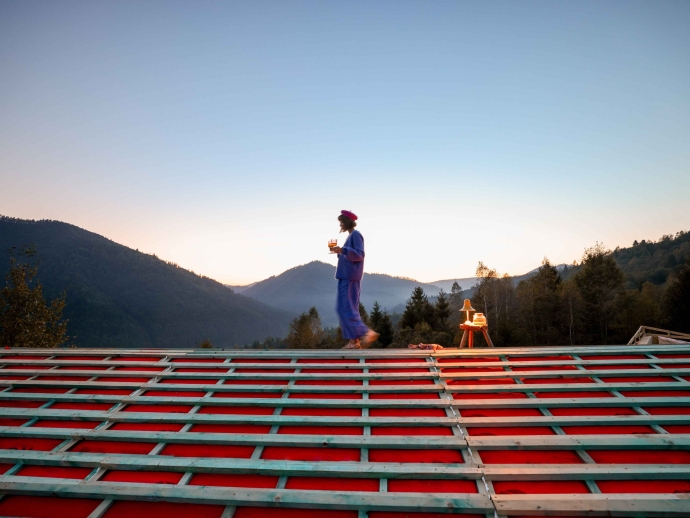How Cool Roofs Can Slash Your DFW Summer Energy Bills: A Cost-Benefit Analysis

As summer temperatures soar in the Dallas-Fort Worth (DFW) area, homeowners and businesses alike are faced with skyrocketing energy bills due to increased air conditioning usage. One effective solution to combat this issue is the installation of a cool roof. Designed to reflect more sunlight and absorb less heat than traditional roofing materials, cool roofs can significantly reduce indoor temperatures and lower energy costs. This article explores how cool roofs work, their benefits, and a cost-benefit analysis for DFW residents considering this energy-efficient option.
Understanding Cool Roofs
Cool roofs are specially engineered roofing systems that utilize reflective materials to minimize heat absorption. They can be made from various materials, including reflective shingles, tiles, and coatings that can be applied over existing roofs. By reflecting sunlight away from the building, cool roofs help maintain lower temperatures inside, reducing the need for air conditioning.
According to the U.S. Department of Energy, a cool roof can stay up to 50°F cooler than a conventional roof on a sunny day. This temperature difference translates into significant energy savings, particularly in hot climates like Texas.
Benefits of Cool Roofs
-
Energy Savings: The primary advantage of cool roofs is their ability to reduce energy consumption. Studies have shown that cool roofs can decrease annual air conditioning energy use by up to 15%. In a region like DFW, where summer temperatures frequently exceed 100°F, this reduction can lead to substantial savings on utility bills.
-
Improved Indoor Comfort: By keeping the roof surface cooler, cool roofs help maintain a more comfortable indoor environment. This is especially beneficial for multi-story homes or buildings where upper floors tend to get excessively hot during summer months.
-
Extended Roof Lifespan: Excessive heat can accelerate the deterioration of roofing materials. Cool roofs reduce thermal stress on roofing systems, potentially extending their lifespan by several years and reducing maintenance costs.
-
Environmental Impact: By lowering energy consumption, cool roofs contribute to reduced greenhouse gas emissions and lower urban heat island effects. This not only benefits individual homeowners but also helps improve overall air quality in urban areas.
-
Rebates and Incentives: Many local utility companies and government programs offer incentives for installing energy-efficient roofing systems, including cool roofs. These financial incentives can offset initial installation costs and enhance the return on investment.
Cost-Benefit Analysis
Initial Costs
The upfront cost of installing a cool roof can vary significantly depending on the type of roofing material chosen and the size of the building. On average, homeowners can expect to pay between $0.75 and $3.00 per square foot for cool roofing materials and installation. While this may be higher than traditional roofing options, it’s essential to consider the long-term savings and benefits.
Long-Term Savings
-
Reduced Energy Bills: Homeowners in DFW who switch to cool roofs often see a noticeable decrease in their monthly energy bills during the summer months. For example, if a household typically spends $300 on electricity in July due to air conditioning usage, a 15% reduction could save approximately $45 per month or $540 annually.
-
Maintenance Savings: The extended lifespan of cool roofs means fewer repairs and replacements over time. If a traditional roof lasts around 20 years while a cool roof may last 25-30 years due to reduced thermal stress, homeowners can save on replacement costs.
-
Incentives: Many utility companies offer rebates for installing energy-efficient systems like cool roofs. Depending on local programs, these rebates can further reduce the initial investment cost.
Payback Period
To determine the payback period for investing in a cool roof, one must consider both initial costs and long-term savings. For instance, if a homeowner spends $5,000 on a new cool roof but saves $540 annually on energy bills, the payback period would be approximately 9 years ($5,000 ÷ $540). However, factoring in additional savings from reduced maintenance costs or available rebates could shorten this period significantly.
Conclusion
For DFW homeowners looking to combat rising summer energy bills while enhancing comfort and sustainability, investing in a cool roof presents an attractive solution. With significant energy savings potential—up to 15%—improved indoor comfort levels, extended roof lifespan, and environmental benefits, the advantages of cool roofs far outweigh their initial costs.
As Texas continues to experience extreme heat during summer months, adopting innovative solutions like cool roofs will not only benefit individual households but also contribute positively to community-wide efforts aimed at reducing energy consumption and improving air quality.
By carefully considering the cost-benefit analysis outlined above and exploring available incentives for installation, homeowners can make informed decisions that lead to long-term savings and enhanced comfort in their homes while playing an active role in creating a more sustainable future for Texas communities.

